Two very popular factory loads for the 300 BO include the Hornady 110 grain V-Max bullet that pops out a muzzle velocity of 2375 fps and a muzzle energy of 1378 foot pounds. The other is the Remington Hog Hammer using a 130 grain Barnes TSX boat tail bullet that generates a MV of 2400 fps and a ME of 1407 foot pounds. Both of these are highly effective rounds for light hunting up to an including white-tailed deer. I have personally harvested deer with the 110 grain Hornady load, one shot kills. I have complete faith in it at reasonable ranges with good bullet placement. One other tidbit of information by way of comparison, the 300 BO generates 16.7 per cent more energy at 300 meters than the 7.62×39 or the AK round.
The 300 BO also can utilize subsonic rounds with an installed suppressor if you are inclined to file the ownership paperwork and the NFA $200 application fee with up to a year delay in getting the permit. Essentially, any ammo that can travel faster than 1,125fpts, or the approximate speed of sound, is considered supersonic. Subsonic ammunition, then, is anything that travels slower than 1,125fps. If it's a quiet shot you're going for, you'll need subsonic ammunition and a quality silencer, which the .300 is compatible with.
Keep in mind, however, that subsonic rounds are not made for hunting as they don't have the penetration power and velocity needed to take down your target. Coupled with a silencer, the maximum range can be reduced to as low as 50 yards. Oh, and best of all, easily running both supersonic and subsonic in the same rifle with absolutely no change in the gun. In fact, it is this latter capability that 300 BLK owners find most attractive. So the .300 Blackout can drop a deer at 200 yards, or lob 30-cal lead downrange with little more noise than a cycling bolt.
In contrast, subsonic ammo will fire a 220 grain bullet and have a muzzle velocity of around 1000 fps and a muzzle energy of 488 ft-lbs with an effective range of 200 yards. I confess that I was compelled to reassess my prejudices against the .300 blackout last Fourth of July. Everyone brought some guns for some informal target shooting. I was able to shoot some AR-15s chambered in .300 Blackout. Big yawn, until someone put a suppressor on their SBR loaded with subsonic ammunition. As pathetic as the external ballistics are, I could still hit targets floating in the reservoir about 200 meters away once I had a sense of the probable bullet drop.
Of course the CZ Scorpion with a short barrel and suppressor was equally impressive. Do you want the ideal cartridge to use with a suppressor or in rifle with a short barrel? The .300 Blackout has a good reputation for cycling the bolt reliably when using subsonic ammo and when used in short barreled rifles. Additionally, it doesn't suffer nearly as big of a drop off in performance as the .308 Winchester or .223 Remington with a shorter barrel length either. Supersonic ammo, typically firing a 125 grain bullet, will have a muzzle velocity of approximately 2250 fps and have a muzzle energy of around 1404 ft-lbs.
Industry standards list the effective range of the supersonic 125 grain bullet loadings to be 500 yards. 300 Blackout on the other hand is designed for slower velocities and the Barnes 110 grain Black Tips are excellent at expanding out of short barrels. Which leads us to range – In my opinion 300 blackout is best served as 300 yard max with supersonic ammo like the Barns and 100 yard with expanding subsonic.
You need to do the work and research here to see if your preferred short barrel length will match those estimates. I know someone reading this has a gun that they can hit milk cartons at 800 yards with their blackout, I get it, but that is not the norm. The ability to use subsonic ammunition, along with a suppressor can give you an extremely quiet firearm.
5.56 was designed to be used with longer barrels, and reaches optimal performance through a 20" barrel. If you want to run 5.56 through a shorter barrel, you need to be prepared for increased muzzle flash and increased noise. Even with the use of a suppressor, shooting 5.56 still requires the use of hearing protection. Super low recoil, lightweight, close range, deer and boar gun.
Normally, when you cut barrel length and weight down on a hunting rifle, you lose precious velocity and increase recoil. A nice attribute of 300 Blackout is that it works pretty dang well with short barrels. So you can use a short action, short barrel, lightweight rifle, and not get beat up by recoil at all.
I'd imagine this is the direction that Ruger was thinking with their 16″ barrel, under 6 lb, American Ranch rifles chambered in 300 Blackout. Note how muzzle energy drops by more than half when switching from supersonic to subsonic. Subsonic loads are usually fired at distances less than 100 meters. Many hunters report poor terminal performance against deer and wild boar at "average" distances.
This demonstrates a distinct advantage in favor of .300 Blackout ballistics when fired from two of the most common barrel lengths for the modern M4 carbine – 14.5" and 9". Due to greater kinetic energy stored in the heavier .308" caliber projectile, the reduction in velocity does not affect hit probability to the degree it affects the 5.56x45mm cartridge. The 300 Blackout was designed by Remington/AAC to create a reliable, compact .30 caliber round for the AR platform that uses a standard bolt and magazine. 300 Blackout is optimized for suppressed fire with heavy bullet subsonic loads but can also be used with supersonic ammunition when extra range is needed. Factory loads of 300 BLK come in several popular bullet weights. In general, those bullets over 200 grains slide down the pipe under the 1100 feet per second speed of sound while anything lighter breaks the sound barrier with a boom.
Since most of the powder is burned within the first nine inches of barrel, near total performance can be achieved in very short barrels. To avoid paperwork and a tax stamp and months of delay, I opted for a 16" barrel literally off the shelf at a local gun store. Rethinking what I said earlier, I built mine as a pistol and wanted the larger grain bullet and low expense of an AR build in 300blk.
This also means that, technically, 9mm is better than 300 BLK and .45 is the best. If only terminal ballistics were that simple, or I had more room to write. That being said, at close ranges with subsonic loadings, the .30 caliber bullet may be the best choice. It may not put the largest hole in the target, but it has better sectional density giving it superior penetration. This will help it defeat some barriers while maintaining lethal force better than the pistol cartridges.
That's why it's the preferred cartridge for military and law enforcement snipers who need the ability to make precise shots at longer range. The increased bullet weight means that it will move slower, but it will not slow down as quickly once fired, allowing for a greater penetration of surfaces. 5.56 rounds use lighter bullets that typically range from 40 grain to 77 grain.
The increased speed of a lighter bullet takes less time to reduce which diminishes its ability to penetrate as many surfaces. It should go without saying that a 30 caliber subsonic suppressed round with a 200 meter range should have endless uses. A bolt cycling is noisy but only within a very limited sound radius. Add snow or thick brush or trees and the noise of a buffer spring boinging and bolt clanking will not travel far. And the thump of bullet impact is evidence that it's too late to do anything about it. Unfortunately, the 30 caliber bullet leaving the muzzle under the speed of sound drops like a mountain pass after a hundred yards, and like a double-black diamond ski slope at 200 yards.
Wow, so little drop in velocity, but I guess that's what happens when it's poking along so slowly that wind resistance is minimal. The tougher part to account for on these heavier bullets is the rainbow trajectory. Making an accurate hit at 200 yards with a subsonic round is a bit of fantasy, because you're looking at 30+ inches of drop even if you sighted at 100 yards. It's also far lower in energy than I'm comfortable using on a deer. For boar at less than 100 yards, it'd work a treat and they wouldn't know what hit them if you ran the subsonic rounds with a suppressor.
The .308 Winchester is technically the first round ever put through the barrel of an AR-platform rifle. Eugene Stoner developed the original ArmaLite AR-10 one year before introducing the smaller AR-15. The big brother to 5.56 and .223 packs much more ballistic performance and range, sacrificing size and weight for distance. It also packs more recoil, but it provides greatly improved resistance to wind drift and bullet drop when compared to 5.56, .223, and .300 BLK. Advanced Armament was able to achieve this by shortening a .223 Remington/5.56mm brass case and then "necking" up the brass case to utilize a larger, heavier .308"/7.62mm diameter projectile.
This has made the round extremely popular with the civilian AR-15 market for target shooting, hunting, and defensive use. A subsonic round made to be used with shorter barrels and a suppressor, you'll get a maximum velocity of around 1,060 and a muzzle energy of nearly half that in foot pounds. Designed with a 200gr weight, each round is also made with clean-burning powder for an ideal shot every time. This tells me that AAC, the company that has fine-tuned their M4/AR-15 platforms to work with high velocity supersonic ammo and low velocity subsonic ammo, deems this the most versatile twist rate.
If, however, you are building your rifle around a specific bullet weight and load, then twist rate is a valid consideration for optimizing that load. If you're using lighter bullets a slower twist rate can give better performance. The .300 BLK, on the other hand, offers a performance level that the .223 Rem. Many people feel the .22-caliber centerfire bullets are a bit light for deer, and I can agree that the .300 BLK, with a good hunting bullet, will make a better hunting choice. Should you prefer the capability to deliver a subsonic bullet accurately with enough oomph to neutralize a threat inside of a home, the .300 BLK may just be your baby.
It really is two different rifles in one, giving both the subsonic and supersonic experience in the same platform. For the most part, the .223 Remington has a significantly flatter trajectory with less bullet drop than the .308 Winchester and the .300 Blackout out to 500 yards. However, the typical supersonic .300 BLK round has a slight edge in kinetic energy over the .223 Remington.
At the same time, .308 Winchester load has a gigantic advantage in this department with more than twice the muzzle energy than the typical .223 Remington and .300 Blackout load. Around the same time, leaders in the military started to look for a new cartridge that could reliably shoot .30 caliber bullets from an M-16 or M-4 rifle while still using a standard bolt and gas system. Additionally, they wanted a cartridge dimensionally similar enough to the 5.56x45mm that a standard M16/AR magazine could still hold 30 rounds of the new cartridge without any modifications. First off, there is no "explosion" with smokeless powder, it burns at a controlled rate.
The hot flaming gasses are traveling at the same speed or slightly faster than the projectile, when they hit the still air at the muzzle, the collision causes the bang. A suppressor does not "handle the explosion", it gives the gasses a place to expand and slow down to subsonic speeds. The next point is if you can't make an "ethical" shot on a game animal with subsonic ammunition, then why would you consider it for combat? All of this is basic physics, there is no magic when it comes to how gasses or projectiles act. No projectile/case option is ideal, they all have pluses and minuses and are a compromise in some way.
If you need to shoot a .30 cal then an AR-10 in .308 is the way to go with the trade off of more recoil and heavier ammunition. What AAC ended up with was a very quiet round (as quiet as a HK MP5-SD) when using subsonic ammo and a suppressor that could also switch to a very powerful 30 caliber supersonic round with only the change of a magazine. As mentioned above, the round excels in short barreled applications. The platform uses all the existing pieces of the M4 weapons system with the only change being the barrel.
You can use your 5.56 AR-15 magazines with 300 Blackout ammunition in a rifle chambered in 300 BLK, but magazines designed specifically for 300 Blackout can improve performance and cut down on common reliability issues. This is particularly true when using subsonic ammunition that is slightly longer and heavier, as these rounds tend to have more problems in 5.56 mags. Due to their precision and accuracy, a 300 blackout bullet can be used to kill a deer from approximately 100 yards away. 300 blackout cartridges are designed with power in mind and are great at penetrating which is why they can easily kill a deer at 100 yards distance. The 300 Blackout, though, is much wider and longer than the 5.56, and it's designed to use a bullet that weighs up to 220-grains—almost four times heavier than standard 5.56 ammo.
This significantly bumps up the muzzle energy without exceeding the speed of sound. It was also made so terminal performance didn't suffer with shorter barrel length or when a suppressor was used on the rifle, as well as deliver more muzzle energy than 5.56mm. By the math, .300 Blackout will experience greater drop due to being fired at a slower velocity, thereby increasing the amount of holdover required to hit a target at the same distance. However, due to the increased weight of the projectile, it will provide more kinetic energy on target at 500 meters and will provide the same kinetic energy as the 5.56 M855 cartridge out to 700 meters.
With a maximum velocity of 1,925fps, this 150gr round is made from a full metal jacket bullet and pristine brass-case. The muzzle energy is approximately 1,200 ft lbs for maximum efficiency. Ideal for shooting ranges, it's made for maximum accuracy and precision.
At approximately $.64 per round, Fiocchi's .300 AAC Blackout is on the lower end of the price spectrum for this type of ammunition. All three cartridges will certainly work in this regard, but the .300 Blackout probably has the edge here as well. Like the .223 Remington, it also has a very mild recoil that facilitates follow-up shots, but it shoots a larger and heavier bullet with more energy. There are also lots of good choices of purpose built self-defense ammo with very good terminal ballistics for the .300 Blackout round (like the Barnes TAC-TXand Lehigh Defense Close Quarters Bullet). At the same time, the .300 Blackout has virtually all the same advantages as the .223 Remington on big game like light recoil and wide availability in quality semi-automatic rifles.
However, the .300 Blackout uses heavier and larger diameter bullets with more kinetic energy. For this reason, it's arguably a better cartridge for shots on big game inside 150 yards than the .223 Remington (especially when used in a rifle with a good .300 Blackout scope). I don't see the 300 Blackout replacing the 5.56 as a military round because of its weight and short range.
As a home defense, police, or light/medium game hunting cartridge, it has potential, provided the operator uses the proper load for each scenario. My rule of thumb is to consider it as a potential pistol carbine or 7.62 AK alternative. In my case, I will run two 10 round orange-colored Magpul Pmag magazines while hunting. One is filled with my subsonic loads and the other with supersonic ones.
There is no rule that says you cannot run both subsonic and supersonic ammo in the same mag. So imagine whitetail deer hunting in thick brush with the first round or two being subsonic and the rest being supersonic. The main thought that went into designing 300 blackout cartridges is to give extra force and power to the AR platform and give the bullets better penetration. The 300 blackout bullets are most effective in intermediate ranges at getting better penetration without reducing the recoil of the gun. Compared with 223, you can get the excellent Federal Gold Medal Match at the same price, or buy domestic ball ammo for right around $0.50 per round, or go to steel cased Russian fodder for $0.30-ish. When it comes to hunting ammo, I really think 223 benefits from running premium bullets since you stand a real chance of impacting a game animal at very high velocities if you take a close shot.

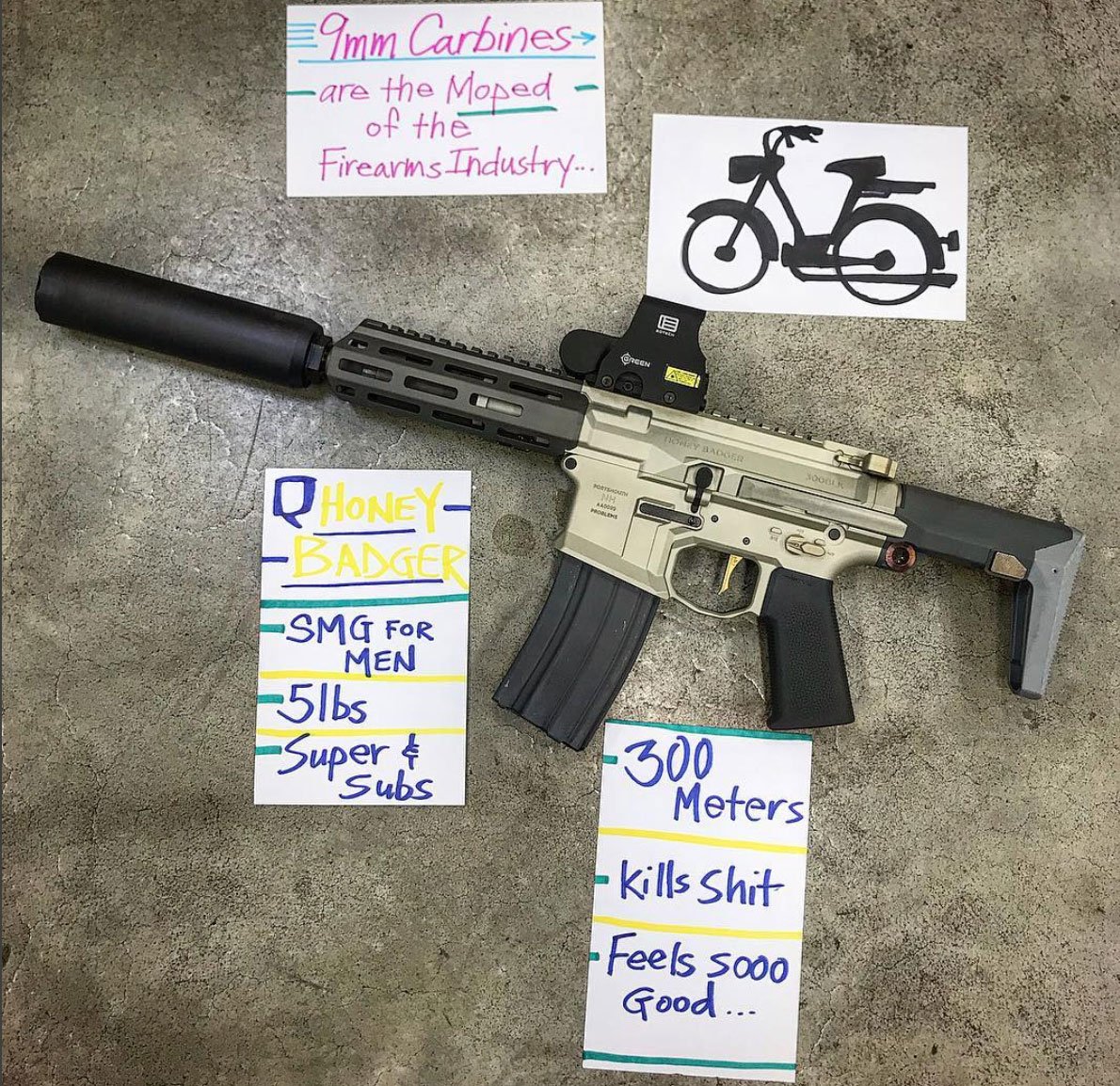



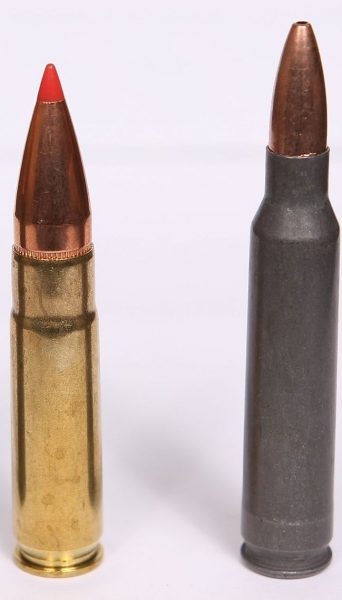





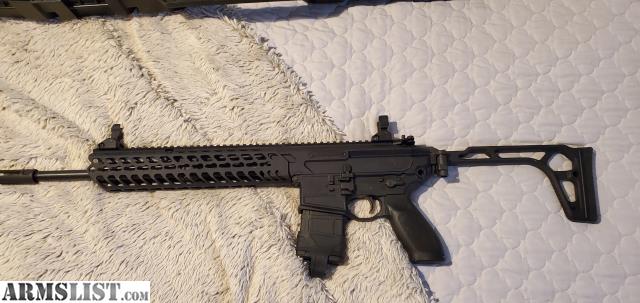



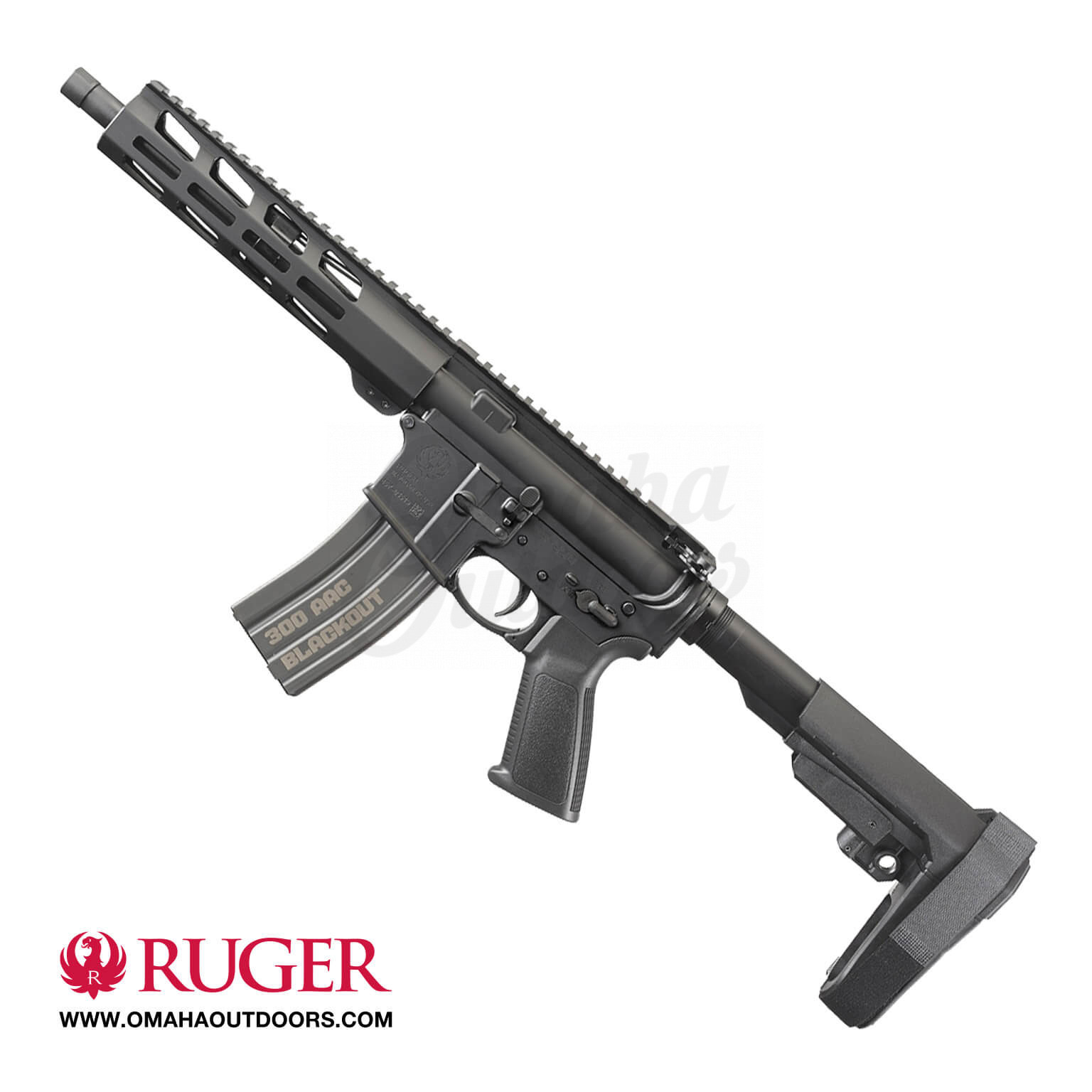






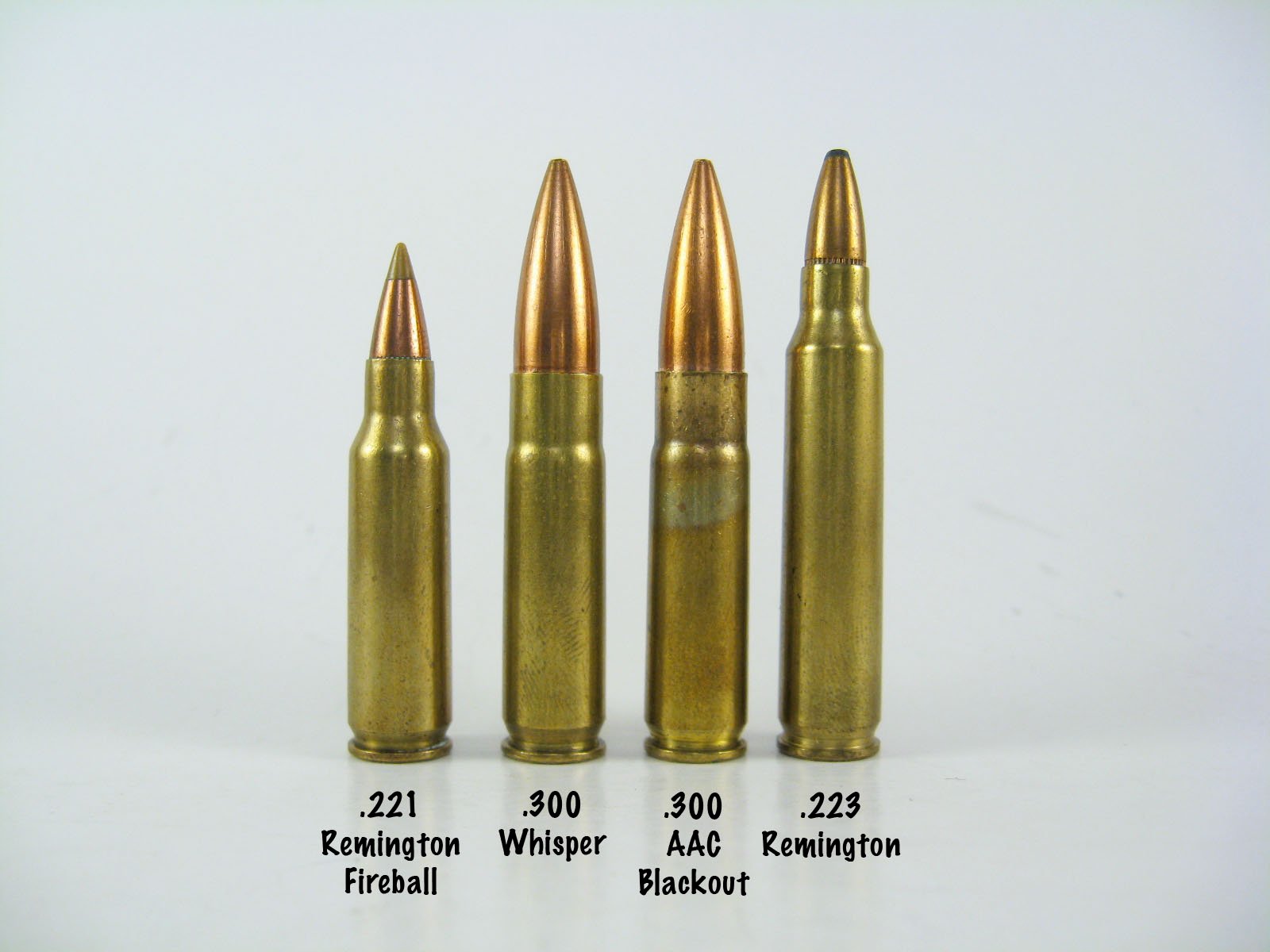
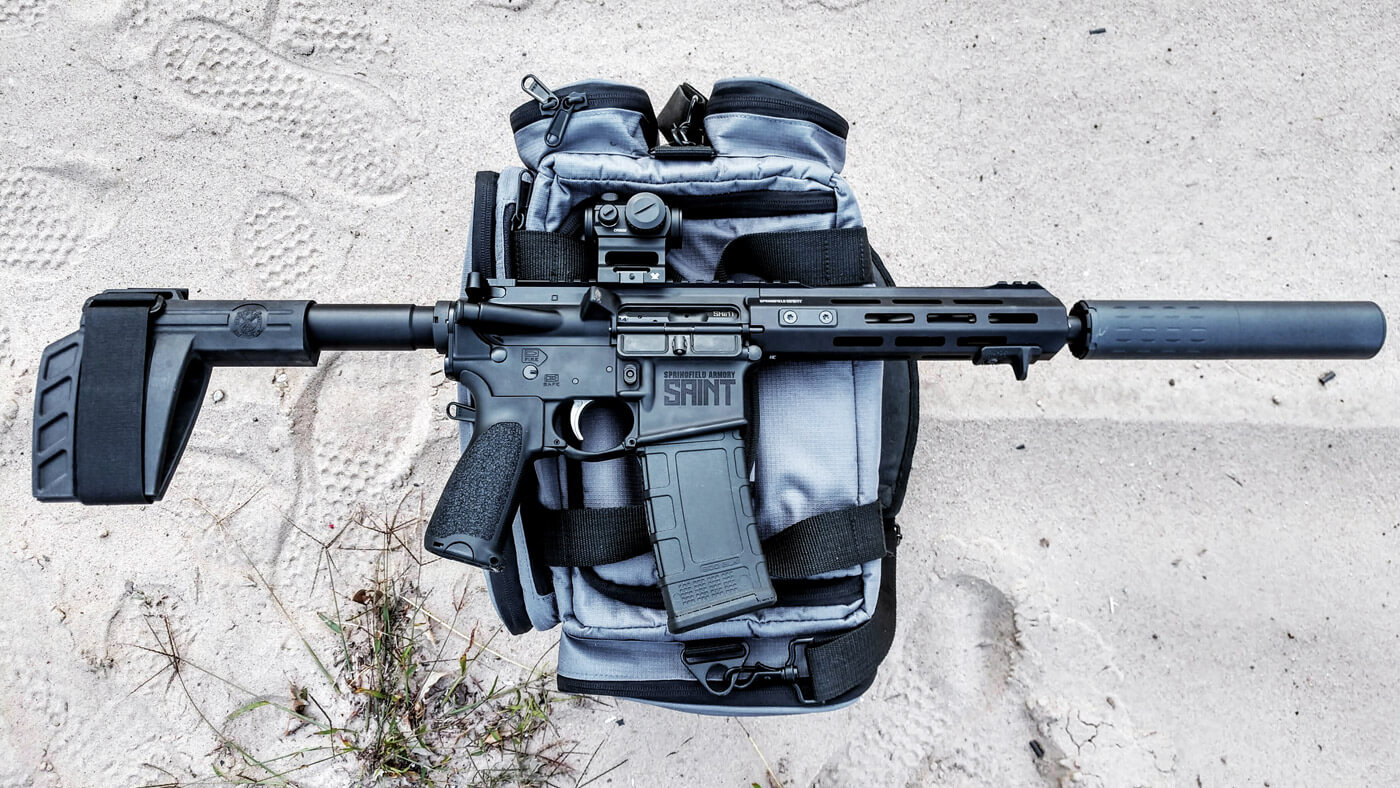



No comments:
Post a Comment
Note: Only a member of this blog may post a comment.